|
|
|
Heron
|
|
| |
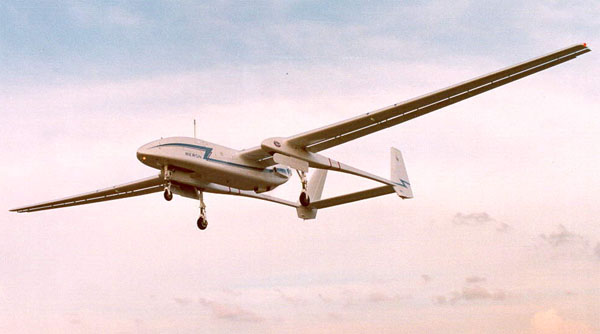
 First model
First model
|
| |
| |
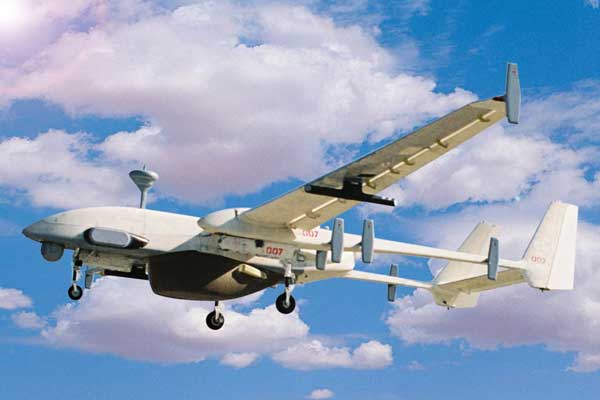
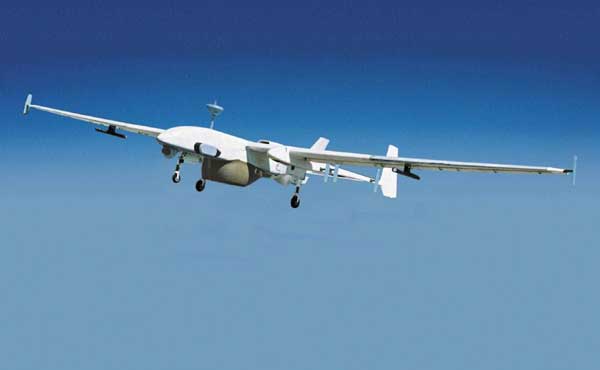 |
| |
| |
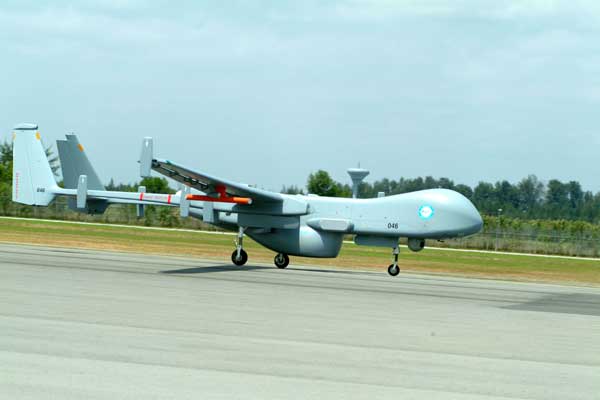
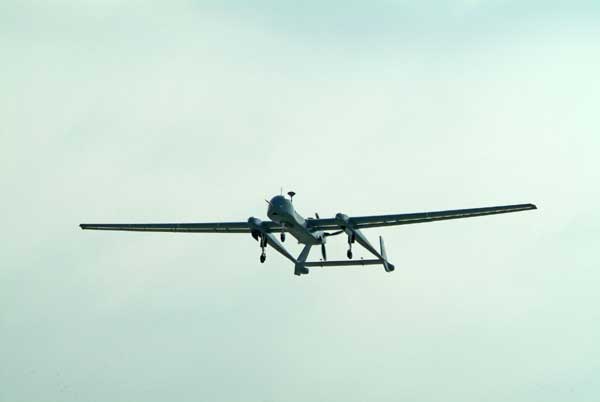
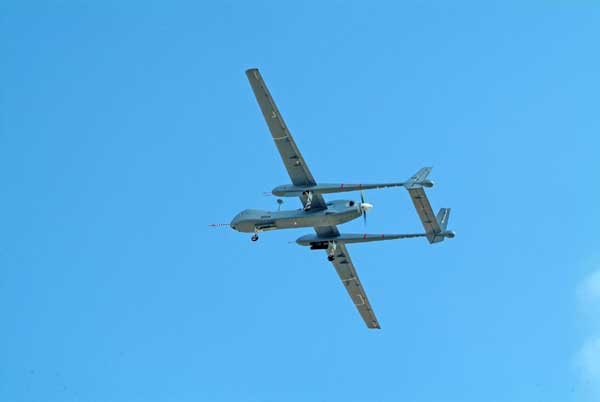
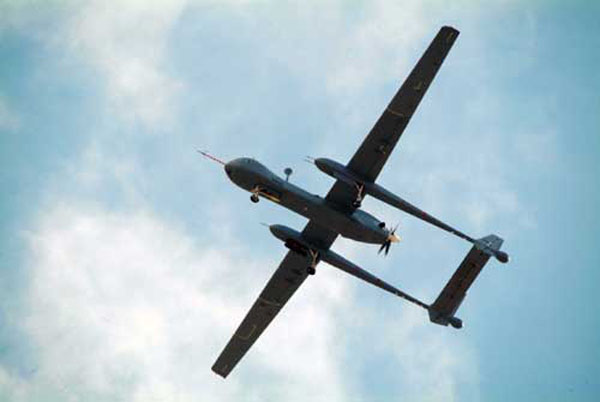
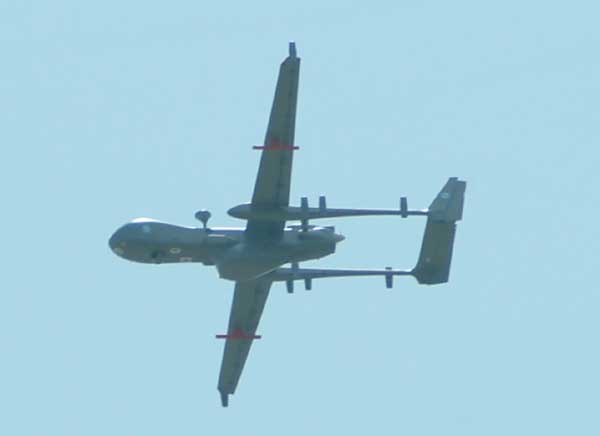
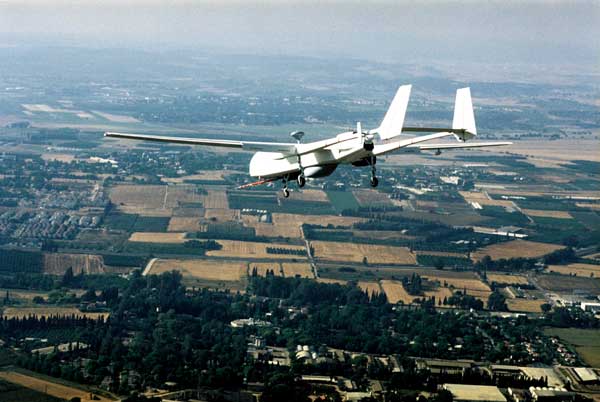
|
| |
| |
|
| |
| |
| |
|
| |
| |
| |
200 Squadron - First UAV Squadron, Palmachim AB |
| |
|
| |
The 200 squadron was established in 1971 to operate unmanned reconnaissance vehicles, the first of which were used in the Yom Kippur War of 1973. The first aircraft of this squadron were remotely piloted vehicles (RPVs), which were replaced with upgraded, programmed autopilot aircraft known as unmanned aerial vehicles (UAVs) in 1981. The first UAV was the IAI Scout (Zahavan), which was used in the 1982 Lebanon War. In 1992, the squadron began operating the IAI Searcher (Hugla), a new version of which was produced in 1998 and named the IAI Searcher Mk. II (Kochav Lavan). In 2005-2006 IAI Heron and Heron TP (Shoval and Eitan) added to the the squadron.
Another UAV squadron was established in 2003, 166 squadron. This caused the old IAI Scout (Zahavan) UAVs to begin phase out from active duty within the IAF.
|
| |
| |
166 Squadron - UAV Squadron, Palmachim AB |
| |
|
| |
The 166 squadron was established in 2003 to operate Elbit/Silver Arrow Hermes 450 (Zik) UAVs. |
| |
| |
Air Defense Corps - North |
| |
In Yom Kippur War 1973, Israel suffered severe losses to Arab air defences. Surface to Air Missiles (SAM) had forced Israeli aircraft to operate at very low level where they were susceptible to Anti-Aircraft Artillery. The Shrike air-to-ground anti-radar missile launched from Phantoms was not altogether successful in clashes with Syrian forces between October 1973 and April 1974. Another option was to launch the Shrike missile with an Israeli-developed rocket booster from a turretless M51 Sherman chassis. The role of the Kilshon (Hebrew for Trident) was to take up a position near the battlefield and launch the Shrike (which had a range of sixteen kilometres in this surface-to-surface guise) after Israeli aircraft had teased the Arab air defence into switching on their search and targeting radars.
This system been replaced by Keres in early 80's, The Kere's first experience in battle was in the Lebanon War (1982), it had been operated for about 20 years by the air defense corps 153rd battalion, initially from Palmachim AFB and later on from Ramat David AFB until it was finally disbanded in late 90's.
HARPY (shion) is lethal UAV designed to detect, attack and destroy radar emitters. In late 90's Harpy replaced Keres that operated for about 20 years by the air defense corps' 153rd battalion from Ramat David AFB. |
| |
| |
| |
| |
| |
| |
Reload this page if you have problem to see this map.
|
| |
| |
| |
| |
|
| |
| |
| |
Heron 1/Mahatz 1/Shoval |
| |
|
| |
The Heron UAV System is an operational fourth generation long-endurance medium-altitude system based on leading-edge technology with new fully automatic take-off and landing features. It provides deep-penetration, wide-area, real-time intelligence to national agencies, theater commanders and lower echelons. The Heron provides ample modular space up to 250 kg for customer furnished equipment, is interoperable with other MALAT UAV systems and has demonstrated 52 hours of continuous flight.
The Heron UAV system has been developed by IAI / Malat, to carry out strategic reconnaissance and surveillance. Initially deployed with the Indian defense forces, for high altitude land surveillance and maritime patrol missions, the Heron has been acquired by the Israel Air Force and Turkish defense Forces, for similar applications. |
| |
| |
|
| |
| |
The HERON I main features and capabilities are:
-
Multiple operational configurations
-
Adverse weather capability
-
Safe, reliable and easy operation
-
Simultaneously 4 sensors use capability
-
Satellite communication for extended range (SATCOM)
-
Two proven simultaneous Automatic Takeoff and Landing (ATOL) systems for maximal safety
-
Fully redundant, state-of-the-art avionics
-
Retractable landing gear
|
| |
|
| |
Payloads
-
Electro Optical (TV & IR Combi or Triple Sensor TV/IR/LD)
-
Synthetic Aperture Radar (SAR)
-
Maritime Patrol Radar (MPR)
-
COMINT & ESM capability
-
Customer furnished sensor suites
-
Communication relay package
-
Integrated ATC Radio
Datalinks
Performance
Technical Data
|
| |
| |
| |
Heron 2/Mahatz 2/Heron TP/Eitan |
| |
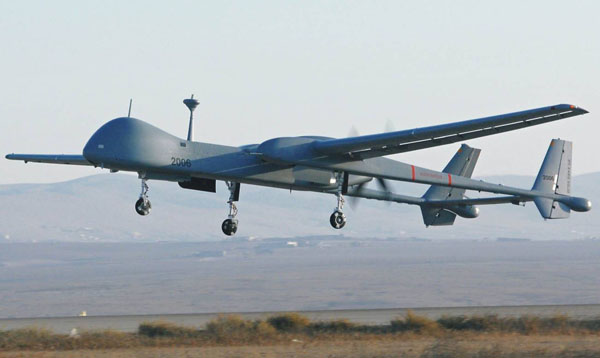
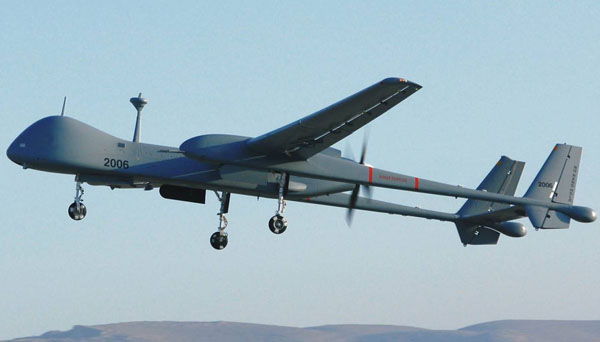
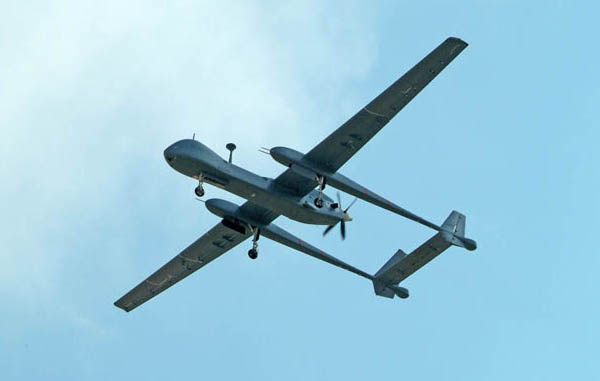 |
| |
| |
| |
After increasing media attention IAI Malat has finally taken the wraps of its newest UAV and the largest yet to be built in Israel, the Heron TP (Heron 2). The choice of Paris Air Show 2007 as the first public showing of the UAV confirms the maturing nature of the UAV market in Europe and IAI says it was difficult to secure the permissions to exhibit the aircraft.
The MALE UAV, which is based on the original Heron design, has a wingspan of just under 26m, length of 14m, and the aircraft has a maximum takeoff weight of 4650kg with a typical mission payload of 1000kg. The UAV is powered by a 1,200hp Pratt & Whitney Canada PT6A turboprop engine that powers a four-blade propeller. The long wingspan and the extra power give the UAV much better endurance, range and altitude than Heron 1.
According to officials the Heron TP has an operational altitude of 45,000ft and is capable of missions of more than 36 hours duration. The UAV has been designed to meet Israel Defence Force (IDF) requirements for a MALE UAV and made its first flights in 2006 at around the time of the Farnborough Air Show.
The system has been dubbed Eitan by the Israel Air Force and is primarily being envisioned for the intelligence, surveillance, and target acquisition role, after the IAF proved its concept of operations in Lebanon war 2006. However, the IDF is believed to be exploring a number of other roles for the aircraft including as an element in a future missile defence system.
The Heron TP has a large payload capacity within its central body and can be fitted with a range of sensors. The UAV has a range of datalinks and is supported for both line of sight and beyond line of sight communications. |
| |
| |
|
| |
| |
The HERON TP main features and capabilities are:
-
Multi mission platform with multiple operational configurations
-
Large internal volume for a variety of payloads
-
Simultaneous and flexible operation of payloads
-
All weather capability
-
Operation above commercial traffic
-
Satellite communication for extended range (SATCOM)
-
Automatic Takeoff and Landing (ATOL) systems for maximal safety
-
Triple, fully redundant, state-of-the-art avionics
-
Retractable landing gear
-
Safe, reliable and easy operation
|
| |
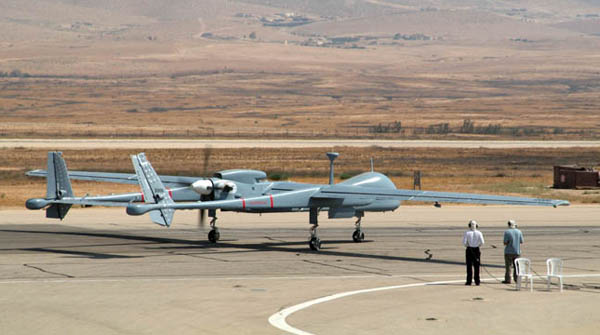
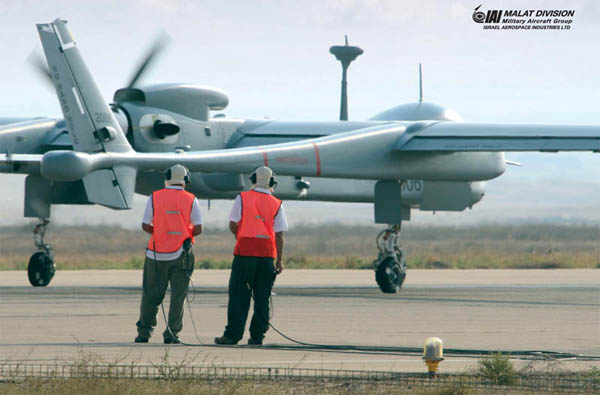 |
| |
Payloads
-
EO/IR/LRF
-
SAR
-
MPR
-
ELINT
-
COMINT
Data Links
Performance
Technical Data
-
Max take-off weight: 4,650 kg
-
Typical mission payload: 1,000 kg
-
Overall length 14 m
-
Wingspan 26 m
-
Engine: 1,200 Hp Turbo Prop
|
| |
| |
| |
Heron 1/Shoval in IAF Service |
| |
|
| |
| |
| |
|
| |
| |
March 7, 2007
The Israel Air Force receives the Heron 1 (Shoval) UAV system, made by IAI, Heron 1 represent a substantial leap to the air force's operational capabilities due to the UAV's unique characteristics: being the largest and heaviest of the IAF's UAV fleet with the largest payload carrying capability compared to other IAF's UAVs. The Heron can fly at an altitude of 30,000 feet, and has an endurance of over 40 hours. It can carry a number of payloads and sensors simultaneously, and supply its operators with real-time data. The UAV uses a quiet engine and has redundant systems, providing very high mission reliability. |
| |
| |
|
Heron 2/Heron TP/Eitan in IAF Service |
| |
|
| |
08 October 2007
The Israel Air Force presented its next generation of Unmanned Aerial Vehicles (UAVs), Eitan, the force's largest UAV. Eitan, a High-Altitude Long-Endurance (HALE) UAV is in the final stages of development and should be operational within a year. Eitan is equal in size to a Boeing 737 and can carry up to 1 ton of equipment.
Eitan weighs 4.5 tons and can climb to an altitude of 45,000 feet. It can stay in the air for up to 24 hours and travel very long distances. Despite its size it is very quiet and can therefore be used in secret operations.
|
| |
| |
| |
Indian Army to Acquire Israeli Heron UAVs |
| |
|
| |
2005
India has renewed interest in buying unmanned spy planes from Israel for deployment on its borders with Pakistan and China.
A deal with Israel Aircraft Industries (IAI) for the purchase of 50 Heron aircraft that can mount a remote surveillance of the ground from a height of 20,000 feet is in advanced stage of negotiation.
The Indian Army sign the contract for the Heron unmanned aerial vehicles (UAVs) after identifying the Israeli aircraft as the best for use in the Himalayas. Other bidder's UAVs failed in the height test.
The Indian Army already has a fleet of 12 Heron UAVs and their efficiency has been established beyond doubt, source said. They point out that a deal worth over $210 million was almost struck in early 2004 but it fell through because of the change of government at the centre.
The present political leadership has been convinced by the drone's value after they played a crucial part in search and rescue operations following the Indian Ocean tsunami in December last year. Israeli-made Searcher and Heron UAVs were used to locate trapped survivors and missing bodies, primarily in the region of the Andaman and Nicobar islands. Since these UAVs are able to relay clear photographs while in flight, the Indian Air Force was able to dispatch rescue helicopters as soon as a survivor or victims were identified on screen via a live feed.
An impressed political leadership approved the Defence Ministry’s proposal that such UAVs, which can monitor 50 to 60 square kilometres each, should be deployed on the Line of Control (LoC) and on the Chinese border to detect intrusions.
The Defence Ministry pressed for UAVs as it does not have an early-airborne warning and control system (AWACS), nor will it have falcon radars until 2007.
|
| |
| |
| |
Turkey to Buy $200 Million of Israeli UAVs |
| |
|
| |
2005
Culminating over six years of negotiations, Turkey is finally signing a $200 million deal to purchase a network of Israeli unmanned aerial vehicles and ground stations.
Turkey’s Defense Ministry chose the Israel Aircraft Industrie's Heron drone and Elbit System’s ground stations over the US General Atomics Aeronautical System’s Predator.
The Heron is a multi-role drone used for surveillance and reconnaissance missions. The deal involves some 10 ground stations, each one with three or four UAVs. TheTurkish army, navy and air forces are all to use them.
According to industry sources, a Turkish aerospace subsidiary Tusash will be the Turkish partner with Elbit Systems and Israel Aircraft Industries splitting some 75 percent of the deal.
The deal was to have been announced during next month’s visit to Israel by Turkish Prime Minister Tayyip Erdogan. But media leaks in Ankara revealed the signing of the contract Monday.
The Heron is manufactured by IAI’s Malat Division, which says it has a range of 1,000 kilometers and can carry a 250-kilogram payload.
|
| |
| |
| |
Unmanned Aircraft Trial Boosts Australia's Border Protection |
| |
|
| |
Unmanned aircraft trial boosts border protection - Friday, 23rd May 2008
A six-week trial of an unmanned aerial vehicle (UAV) in Australia's northern waters is providing an added layer of protection against border threats, the Minister for Home Affairs, Bob Debus said today.
The Border Protection Command is basing its trial of the UAV at Weipa in far north Queensland to assess the technology for potential use in civil maritime surveillance.
The aircraft is a mid-range 'Heron' model operated by Israel Aerospace Industries. It is 8.5m long with a wingspan of 16.6m and has a range of more than 1800km.
Mr Debus said the aircraft had flown successfully over the Gulf of Carpentaria, Torres Strait and the Great Barrier Reef during the trials.
"All are areas of interest to Border Protection Command in preventing illegal foreign fishing, keeping a watch for quarantine and border threats and detecting prohibited activities in protected marine areas.
"UAVs are quiet, virtually undetectable and can maintain extended surveillance of a target area or vessel for many hours at a time," Mr Debus said.
Live radar, vessel information, video and photographs from the UAV are transmitted to a temporary ground station in Weipa. This information is then provided to the BPC National Surveillance Centre in Canberra.
The data is shared with agencies including the Australian Fisheries Management Authority and the Great Barrier Reef Marine Park Authority. Responses are then mounted to any sightings of suspicious foreign or domestic vessels that may be illegally fishing, or engaged in other prohibited activities.
"Piloted aircraft, helicopters and satellite technology are already available to help protect our borders and are in round-the-clock use by the Command," Mr Debus said.
"This trial will assess the suitability of UAVs to boost surveillance of critical offshore maritime areas, including the vital Torres Strait border region and the environmentally sensitive Great Barrier Reef."
The Border Protection Command will prepare a report for the Government following the end of the trial in June. |
| |
| |
| |
Eagle I/ Eagle II |
| |
|
| |
The SIDM MALE system for the French user is based on the EAGLE I system developed jointly by EADS and Israel Aircraft Industries (IAI). This is an autonomous, medium-altitude system capable of operating in the intelligence, surveillance, target acquisition and reconnaissance (ISTAR) roles, as well as jamming defensive systems and carrying out target designation and the combat of ground targets. Thanks to an advanced suite of sensors (electro-optical/infrared/laser target designation), synthetic aperture radar ground moving target identification (SAR-GMTI), maritime patrol and reconnaissance (MPR), SATCOM and redundant avionics, EAGLE I is optimally suited for high-altitude (25,000 ft) strategic reconnaissance missions with a loiter time of up to 24 hours over the operational area. The all-weather system can be operated by day or night.
|
| |
 |
| |
Eagle Specifications
Technical Data
-
Max Take-off Weight 1,150 kg
-
Max Payload Weight 250 kg
-
Wing Span 16.30 m
-
Overall Length 8.94 m
-
Power plant Rotax 914 115 hp
-
Speed 84-112 ktas
|
| |
|
|
|
| |
|
|
EAGLE I |
EAGLE II |
Based on |
Heron |
Heron TP |
Engine |
Internal combustion |
Turbo-Prop |
Power |
165 hp |
1200 hp |
Propeller diameter |
2 m |
2.8 m |
Max Take-off weight |
1200 kg |
3,900 kg |
Max. Payload capacity |
>250 kg |
>450 kg |
Max. Fuel capacity |
400 kg |
1,750 kg |
Total length |
9.3 m |
13. m |
Wing span |
16.6 m |
26. m |
Total height |
2.3 m |
3.3 m |
TO Distance |
<1000 m |
<1000 m |
Maximum altitude |
> 25,000 ft |
> 45,000 ft |
Operational Altitude |
> 20,000 ft |
> 41,000 ft |
Time of climb to OA |
< 50 min. |
< 40 min. |
Max. payload weight |
250 kg |
> 450 kg |
Max. speed |
120 ktas at 25 Kft |
220 ktas at 45 Kft |
Cruise speed at OA |
80 to 110 ktas |
180 to 200 ktas |
Total mission time |
> 30 h |
>24 h |
Loiter time at 550 NM |
> 12 h |
> 16 h |
Loiter time at 800 NM |
> 7 h |
> 12 h |
|
|
| |
|
| |
|
| |
|
Heron in Production |
|
| |
|
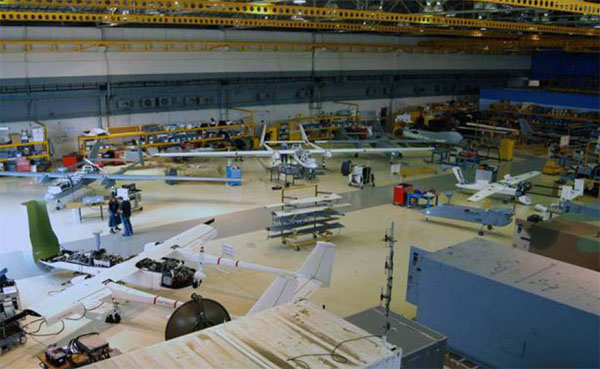
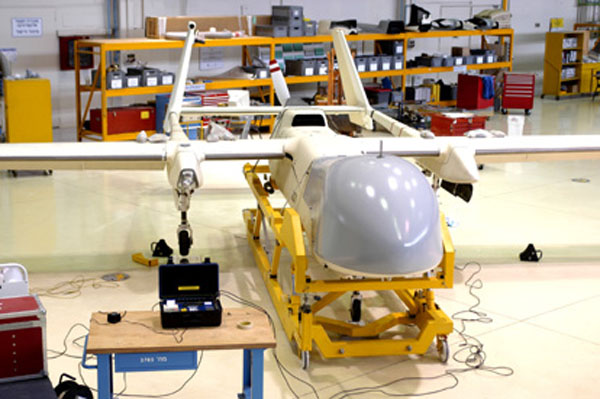
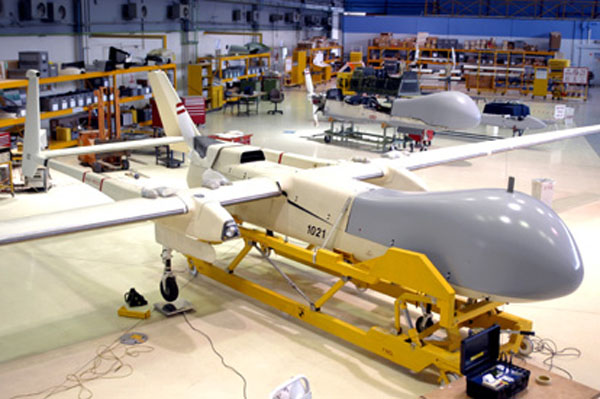
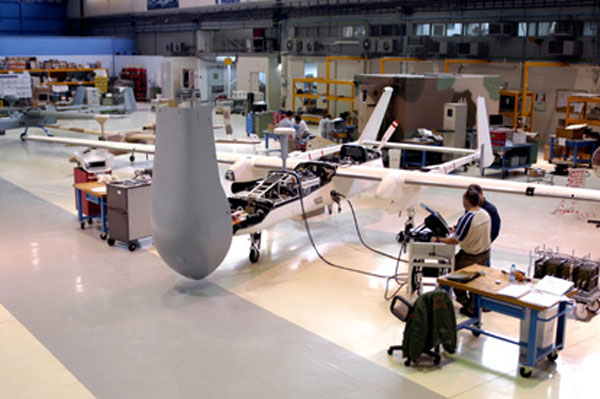
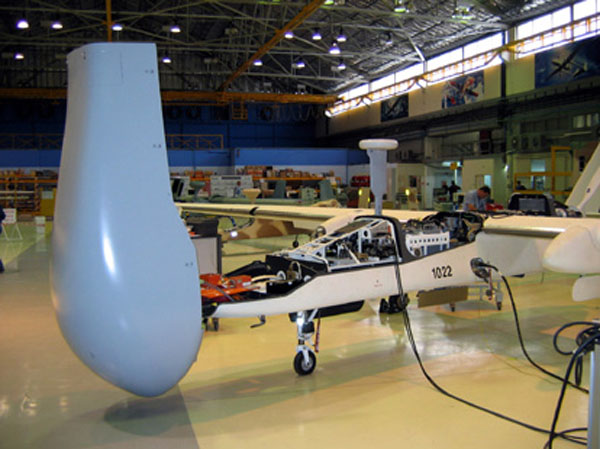
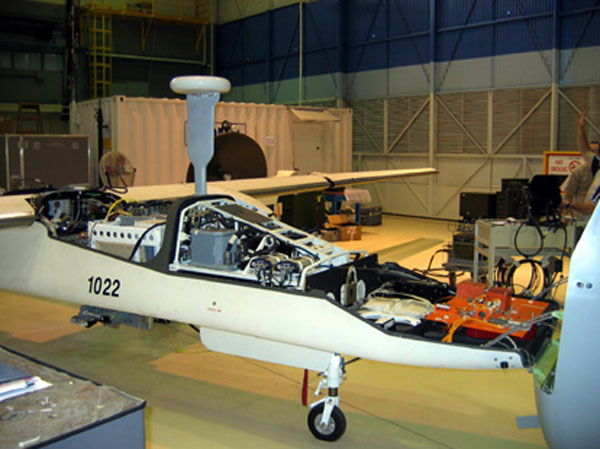
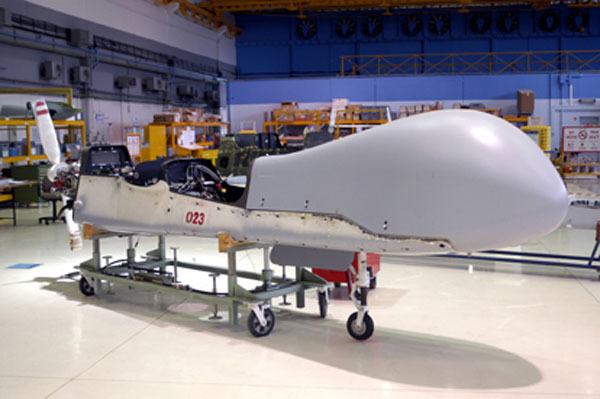
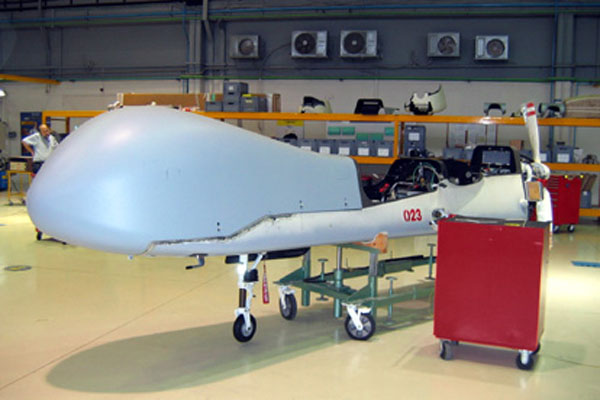
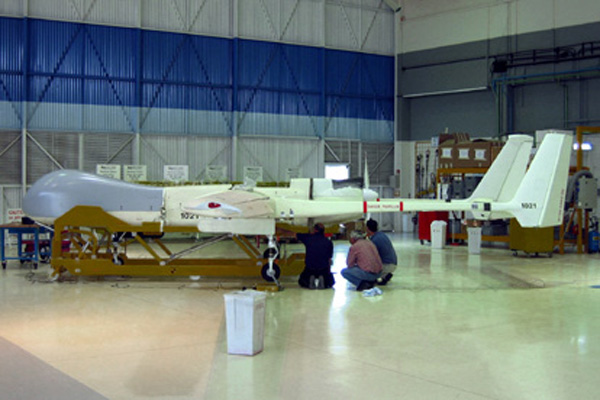
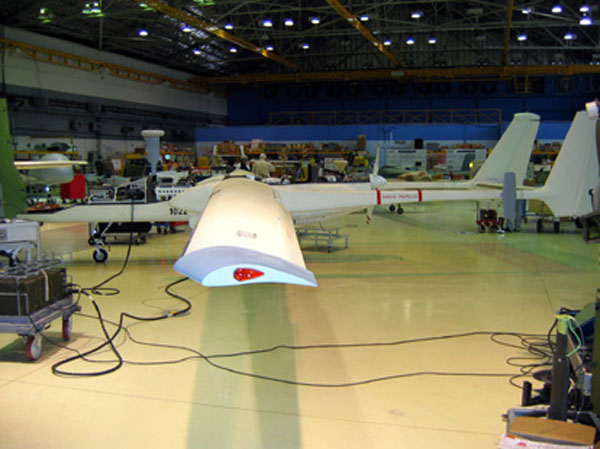
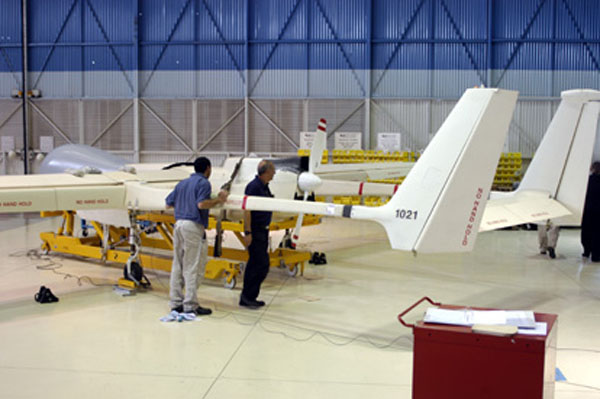
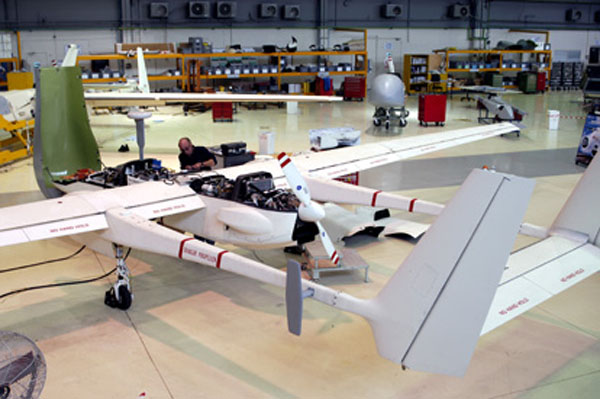
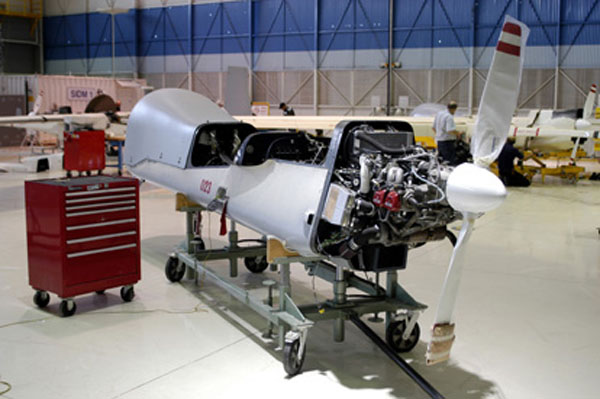
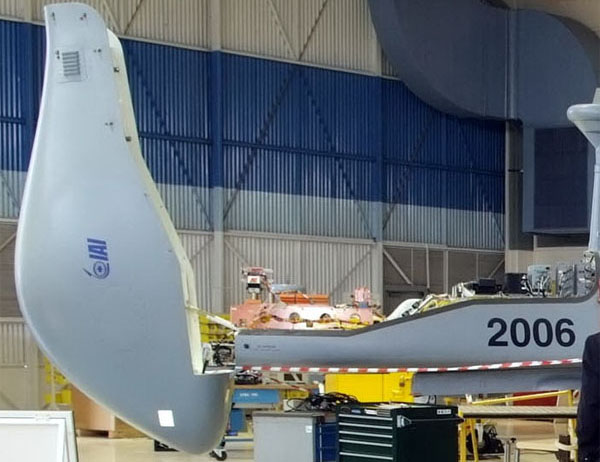
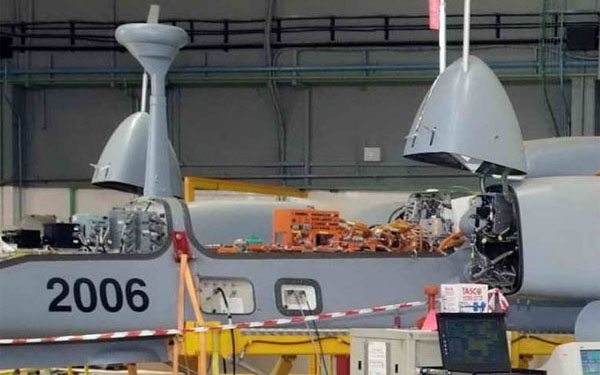
|
|
 |
